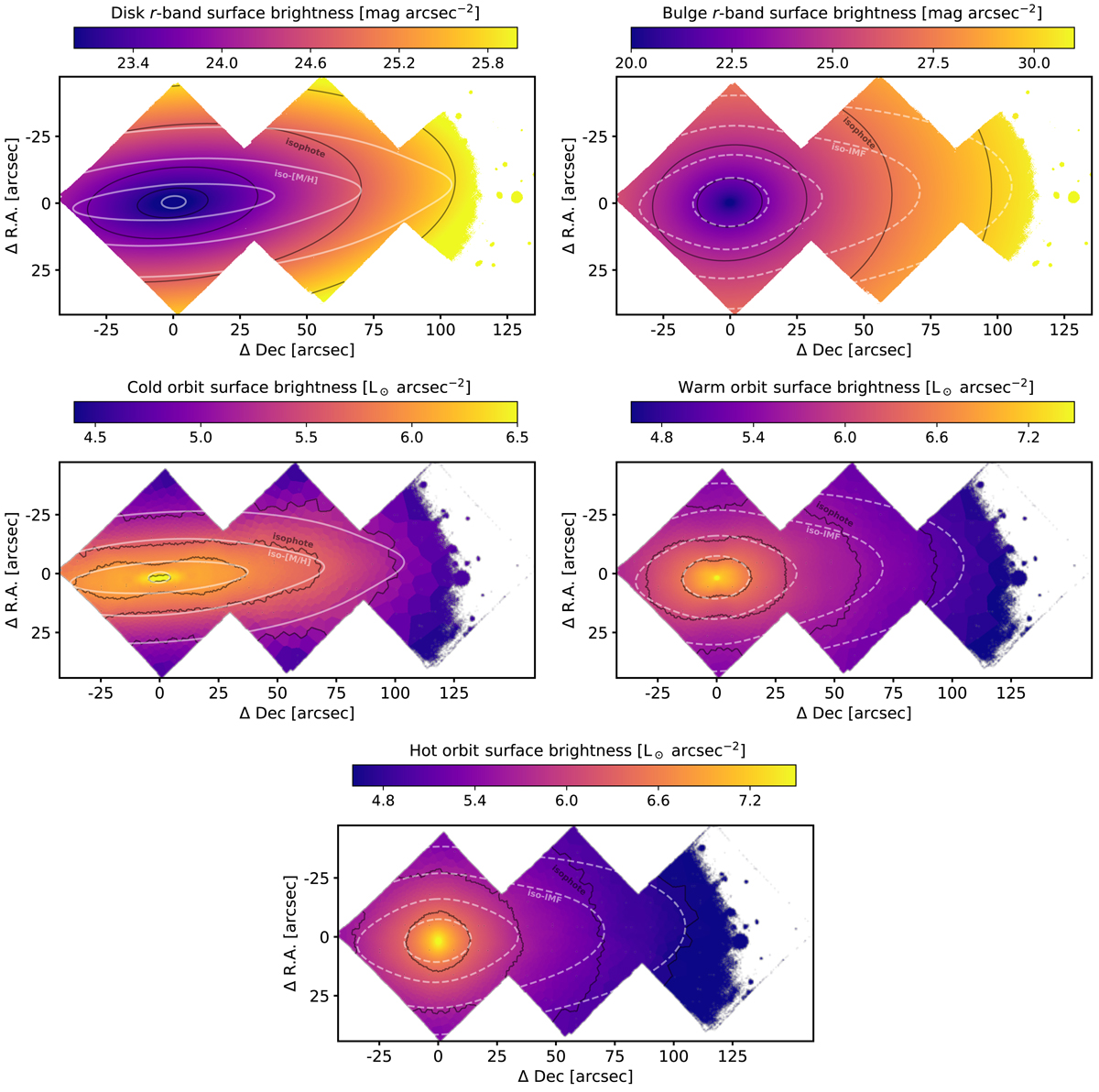Fig. 7.

Internal structure vs. stellar population maps. The top panels show the comparison between metallicity and photometric disk (top left) and IMF and bulge (top right). Neither the disk nor the bulge seem to follow the structure of the stellar population maps. The three bottom panels compare the orbital decomposition of FCC 167 with the stellar population properties. On the left, the agreement between the metallicity structure (white solid lines) and the spatial distribution of the cold orbits indicates that the chemically evolved (metal-rich and [Mg/Fe]-poor) structure observed in the stellar population maps corresponds to a cold stellar disk with an extended star formation history. IMF contours (white dashed lines), on the other hand, closely follow the distribution of warm orbits (right). Hot orbits, in contrast, are decoupled from the stellar population properties.
Current usage metrics show cumulative count of Article Views (full-text article views including HTML views, PDF and ePub downloads, according to the available data) and Abstracts Views on Vision4Press platform.
Data correspond to usage on the plateform after 2015. The current usage metrics is available 48-96 hours after online publication and is updated daily on week days.
Initial download of the metrics may take a while.


